2024 Hyundai Santa Fe new car review
An all-new version of a big family SUV is due to arrive next year but it bears an uncanny resemblance to a well-known luxury SUV.
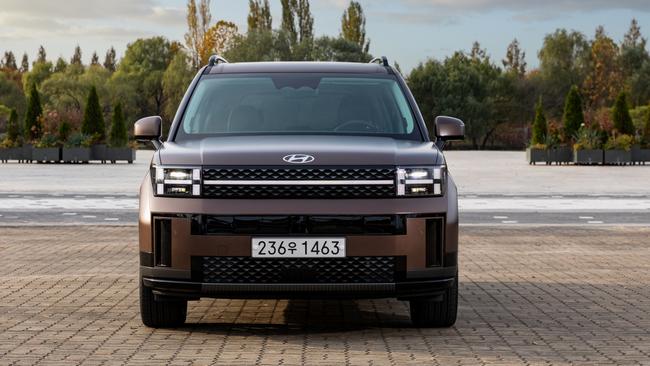
New Cars
Don't miss out on the headlines from New Cars. Followed categories will be added to My News.
The new Hyundai Santa Fe is unrecognisable from the previous model, but will still look very familiar to car aficionados, thanks to an undeniable resemblance to a Land Rover.
This fifth-generation Santa Fe has the big squared off rear-end of a Discovery or Defender, designed to liberate more room for rear-seat passengers.
The square-jawed front end also has shades of Land Rover in its grill and headlight treatment.
Due in Australia around April 2024, Hyundai’s new three-row SUV blends 80s boxiness, chunky and rugged wheel arches, up to 21-inch wheels, and signature H-pattern lights that remind of pixelated Space Invaders.
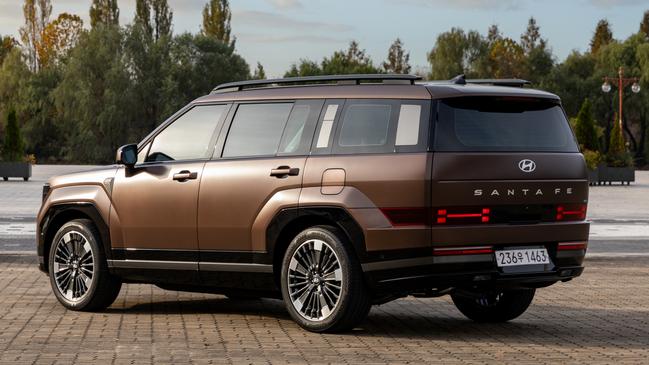
At a time where brands’ SUV designs are often automotive Russian dolls (think Mazda, Mercedes-Benz), this Santa Fe looks like no other Hyundai, and, Land Rover excluded, no other SUV.
There’s substance to match its makeover. Compared to the current car it’s longer, taller and with a stretched wheelbase for improved cabin space.

This mainly benefits the rearmost two seats, Hyundai claiming its third row’s now largest in class. It’s a welcome improvement – the current Santa Fe’s two cheap seats are overly cosy.
My six-foot frame tolerated third-row life – reclining backrests, USB-C ports, bottle holders and a domestic power point proved it’s hardly third-class travel.
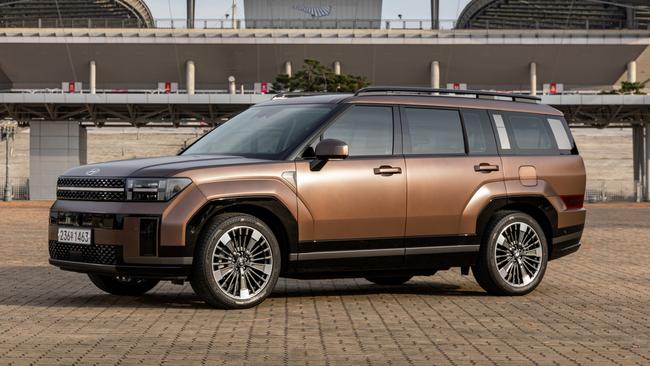
More family-friendliness comes with vast, sliding middle-row seating and cavernous boot space with a wide aperture. The slab-sided tailgate design is mini-van-wide, making loading large items easy. With seats folded, a double blow-up mattress would easily fit.
Less friendly – to other road users at least – are the new Santa Fe’s rear indicators and reverse lights mounted perilously low. I like the rear design overall, but for a large SUV, it appears skinny and awkward from certain angles.

Another challenge is what’s under its angled bonnet. From launch, we’ll receive only an all-wheel drive 1.6-litre turbocharged petrol hybrid, likely to mirror the current car’s combined 169kW and 350Nm.
There’s no diesel, no V6 petrol and the expected (and punchier) non-hybrid 207kW/422Nm 2.5-litre turbo petrol’s arrival time is unknown.
The hybrid lacks outright oomph – 100km/h doesn’t arrive for 9.5 seconds – but it’s impressively economical at 6.5L/100km.

It’s smooth too. We managed up to 50km/h in the city using only battery power, before the petrol engine seamlessly whispered into action. Pin the throttle and things are far noisier, but for typical family duties it’s a delightfully refined powertrain.
Our urban test returned 6L/100km – superb for a 2225kg seven-seater – although we were being deliberately gentle on the go pedal.
It’s a vast improvement on the heavy-drinking V6 petrol, but will this hybrid serve as fair replacement for the discontinued economical diesel, which snares about 70 per cent of Santa Fe sales?
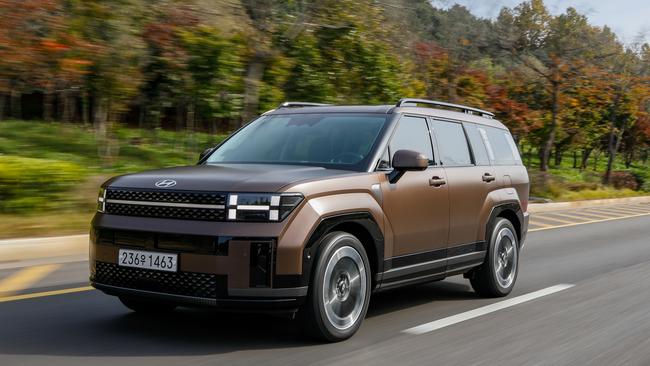
If you need to tow, it’s a poor substitute. The hybrid handles just 1650kg, while the current diesel manages 2500kg.
But do Santa Fe drivers tow? Aussie families typically want economy, space, safety and tech. Here, the new hybrid excels.
Grades, full specifications and pricing won’t be known for a few months, but expect three trim levels and a starting price of about $60,000 drive-away, up around $5000 from before.

From the driver’s seat the extra cost feels worth it. The dashboard’s centrepiece is a panoramic curved display housing two 12.3-inch screens, one for driver information, the other infotainment.
Relocating the gear selector to the steering column’s a clever move, freeing up the centre console to house wireless charging for two smartphones, USB-C ports and masses of storage.
Climate’s a mix of quick access knobs and digital buttons, while seats in our top grade were leather, heated and had a fancy business class like leg rest. Korean brands, once again, show they can near rival prestige brands at this stuff.
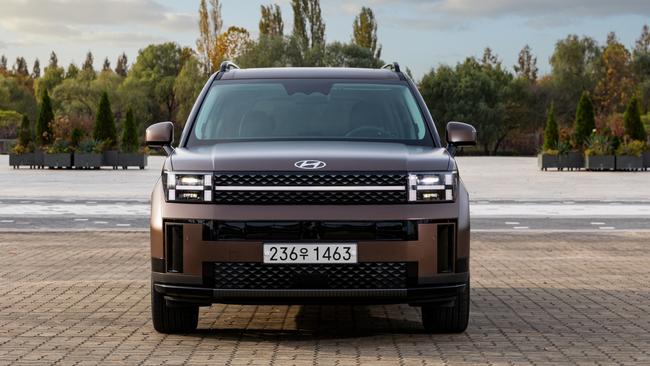
Questionable bamboo-like cabin trim and the odd hard plastic were the only grumbles, and I question the need for a UV-C sterilisation tray above the glovebox. Sling your wallet or phone in here and these germ magnets are supposedly sterilised – an OCD step too far?
Matching cabin tranquillity is the overall drive. Despite our test car’s giant 21-inch wheels and too skinny tyres, ride quality – even over choppy ground – proved superb.
The cabin’s hushed at speed, bumps are well absorbed, and this big brute even handles corners with fair poise despite its mass. In town, on electric only, it’s divine. Trust me, you won’t miss that diesel rattle.
Driver assist and safety are comprehensive, and Hyundai appears to have made its nannying lane-keep system less strict and gentler in its steering corrections.
VERDICT
A comfortable, efficient, safe and feature-packed large SUV with proper space for seven. A brilliant family car, but will its controversial looks help or hinder deserved sales?
HYUNDAI SANTA FE VITALS
PRICE From about $60,000 drive-away (estimated)
ENGINE 1.6-litre turbocharged four-cylinder petrol hybrid, 132kW/265Nm
THIRST 6.5L/100km (estimated)
WARRANTY/SERVICE 5 years/unlimited km, service costs TBA
SAFETY Auto emergency braking, lane follow assist, lane centring, driver attention warning, driver monitor, active cruise control, speed limit assist, rear view monitor, rear cross traffic alert and assist, parking sensors, safe exit assist
LUGGAGE 725 litres
Originally published as 2024 Hyundai Santa Fe new car review


